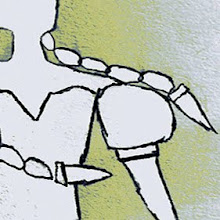Girl Arranging Flowers (1921)
Be pleased to meet some beautiful and bright paintings from this American Impressionist painter, born in Baltimore: William McGregor Paxton (1869 – 1941).
William McGregor Paxton is well known for his extraordinary attention to the effects of light and detail in fabric and flesh. His compositions were most often idealized young women in beautiful interiors.
Like many of his art colleagues, he found inspiration in the work of the 17th century Dutch painter Johannes Vermeer.
Johannes Vermeer: The Milkmaid (circa 1657-58)
William McGregor Paxton was fascinated not only with Vermeer's imagery, but also with the system of optics he employed.
He studied Vermeer's works closely, and discovered that only one area in his compositions was entirely in focus, while the rest were somewhat blurred.
William McGregor Paxton ascribed this peculiarity to binocular vision, crediting Vermeer with recording the slightly different point of view of each individual eye that combine in human sight.
The New Necklace
Paxton began to employ this system in his own work, including The New Necklace, where only the gold beads are sharply defined while the rest of the objects in the composition have softer, blurrier edges.
Nude
This effect is even more noticeable in his 1915 painting entitled Nude, which shows a young woman seated on a blue dress that is spread across the seat of a backless divan.
The woman is shown leaning slightly to the right, reaching for a pink undergarment. The figure is viewed from an angle that is midway between a back view and a right side view.
All objects in the painting are slightly blurred with the exception of the woman's one visible breast (the right one) and parts of her right arm.
•
Dejeuner Venice (1910)
Girl Sweeping (1912)
Girl Combing Her Hair (1909)
Glow of Gold, Gleam of Pearl (1906)
Interior with Two Nude Models
The Blue Cup (1909)
The Figurine (1921)
The Escape
Morning Light
The Housemaid (1910)
•
William McGregor Paxton crafted his elaborate compositions with models in his studio. And the props he used appear in several different paintings.
He was working on his last painting (a view of his living room, with his wife posing for him) when he was stricken with a heart attack and died at the age of 72.














